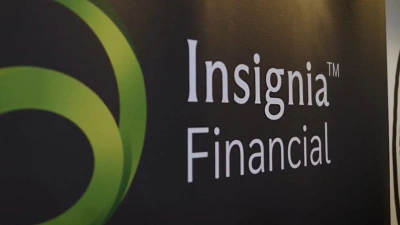Get back to the basics


Jim Steining
As a broker and asset manager that operates in the middle of Australia’s fixed income sector, we talk daily to investors large and small about the impact the past month’s sub-prime fallout has had on their business.
And like any market correction or realignment, there are lessons to be learned. Yet these lessons more often than not come back to the basics of investing — and that’s to have an appropriate level of risk exposure, and to truly understand the nature of the risk inherent in your portfolio.
Fixed income will always play a key role in long-term investment portfolios. At FIIG we believe the more planners and investors can understand about the evolving suite of fixed income options, the better they can build secure portfolios that will deliver the desired return outcome over time.
The winners from the current fixed income shakeout will be those who have maintained the discipline of diversification and who are invested in fixed income for its traditional purpose — that is, the preservation of capital and income. Investors who are cashed up and ready to move should be able to achieve good value as markets realign.
While we believe sophisticated fixed income products are here to stay, perhaps at the end of the day the current market concerns will swing people’s views regarding income generating assets back towards the more conservative end of the spectrum and lower but more sustainable returns.
Where to now?
During the past 10 years, Australia in general has moved from being a borrower to a saver. As individuals we all have super funds and as a country, we now have things like future funds and endowment funds. This has had a profound effect on benchmark interest rate market volatility.
Additionally, large global funds and hedge funds have become active in our markets particularly in the derivatives markets adding significant liquidity.
Notwithstanding this decade of stable price action and an equally stable forecast, there have been some very significant developments in the Australian and global capital markets that have made this period very interesting and make the future of the fixed income asset class look even more so.
The pool of Australian superannuation funds will experience unprecedented growth over coming years. This coincides with a period in time when many of the savers in our economy will be leaving the workforce, cashing in their chips and transitioning to the retirement lifestyle.
And while it has always been difficult for investors to migrate their asset allocation from 20 per cent plus returns generated by the equity asset class in recent times, to the perceived 6 to 7 per cent range that secure fixed income offers, we believe that recent developments in the fixed income asset class make this transition far less of an issue.
Onward march of hybrid and structured products
The development of the hybrid and structured product markets has really blurred the edges of the asset class.
Some assets classed as fixed income offer equity-like returns in the form of income, while others offer only marginal increases or similar returns to traditional fixed income benchmarks. This has created a diverse spectrum of opportunity.
The past five to 10 years has seen the emergence of the listed and unlisted hybrid debt equity markets.
While hybrid debt equity in one form or another is not a new thing, its popularity as an investment has grown significantly.
Issue volumes have been significant and the ASX-listed market has grown from almost nothing on issue to well over 23 billion market cap at present.
This period has also seen exponential growth in structured credit securities — the most common being collateralised debt obligations (CDO), which have been the subject of intense scrutiny and debate recently.
The growth in issuance of these types of securities has come about as a result of the development of the credit derivatives market.
This is somewhat of a revolution in credit and risk management. Investors can create an exposure to a corporate issuer or a pool of issuers for any maturity and at a position in the capital structure of their choice whenever they like. Put simply, it doesn’t really matter if a company wants to borrow money or not you can still effectively lend it to them.
Leverage into credit has played a major role in terms of where the market finds itself today and the volatility global markets have recently endured.
However, it is unlikely that these types of products will not endure given they have become entrenched in investment strategies.
At FIIG we prefer to consider hybrids and structured product for smaller allocations or on a fully diversified basis, particularly if they do not have investment grade ratings or capital guarantees from investment grade issuers.
However, moving from equities into these products generally represents a reduction in risk.
What does this mean for planner and investors? From our perspective it is exciting that the fixed income asset class has expanded and developed.
We see that the growth in the derivatives market will continue and create opportunities for our customers to invest in global fixed income funds and fixed income related products in Australian dollars and in a fully diversified way over coming years. This was not easy five years ago.
At the end of the day, it is important not to lose sight of what an allocation to fixed income is designed to achieve, that is the preservation of capital and income.
An allocation to fixed income is not about shooting the lights out, it’s about having access to money when value in other asset classes or opportunities present themselves. Liquidity and security should be the key drivers of an investment decision and timing will always play an important role.
Jim Stening is the co-founder and managing director of FIIG Securities.
Recommended for you
Net cash flow on AMP’s platforms saw a substantial jump in the last quarter to $740 million, while its new digital advice offering boosted flows to superannuation and investment.
Insignia Financial has provided an update on the status of its private equity bidders as an initial six-week due diligence period comes to an end.
A judge has detailed how individuals lent as much as $1.1 million each to former financial adviser Anthony Del Vecchio, only learning when they contacted his employer that nothing had ever been invested.
Having rejected the possibility of an IPO, Mason Stevens’ CEO details why the wealth platform went down the PE route and how it intends to accelerate its growth ambitions in financial advice.














